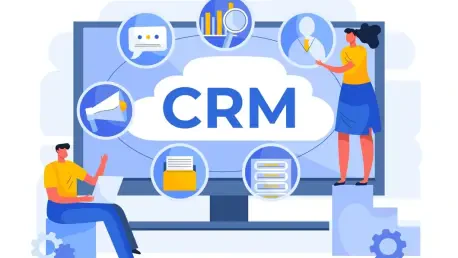Imagine a business landscape where every customer interaction holds the key to exponential growth, yet the sheer volume of data threatens to overwhelm even the most dedicated teams. In today’s hyper-competitive market, companies are grappling with the challenge of managing leads and fostering relationships at scale. Customer Relationship Management (CRM) software has emerged as a lifeline, transforming chaos into streamlined processes and turning raw data into actionable insights. This review dives deep into the world of CRM solutions, exploring their pivotal role in modern business operations, dissecting their standout features, and evaluating their real-world impact across industries. The aim is to provide a clear lens on how these tools empower organizations to thrive amid relentless demand for personalized engagement.
Core Concepts and Importance of CRM Technology
CRM software serves as a centralized hub for managing customer relationships, consolidating data, and optimizing sales and marketing workflows. At its essence, it enables businesses to track interactions, nurture leads, and build lasting connections by organizing information in a cohesive manner. This functionality proves invaluable for companies aiming to deliver tailored experiences while maintaining efficiency in their operations.
The significance of CRM tools cannot be overstated in an environment where customer expectations are at an all-time high. Businesses that fail to adapt risk losing ground to competitors who leverage technology for faster, more informed decision-making. A robust CRM system ensures that no opportunity slips through the cracks, offering a unified view of customer journeys to drive strategic outreach.
Over time, these platforms have evolved dramatically, moving beyond simple contact databases to incorporate advanced automation and artificial intelligence. Positioned as a cornerstone of business technology, CRM solutions now integrate seamlessly with broader ecosystems, supporting growth and scalability. Their role in enhancing operational efficiency makes them indispensable for organizations of any size striving to stay ahead.
Standout Features of Top CRM Platforms
Lead Management and Tracking Capabilities
Effective lead management lies at the heart of any CRM system, focusing on capturing, tracking, and nurturing prospects through the sales funnel. This process ensures that potential customers are engaged at the right moments, increasing the likelihood of conversion. Platforms like Salesforce and HubSpot excel in this domain, offering omnichannel lead capture through forms, social media, and advertisements, alongside detailed tracking of every interaction.
Such comprehensive visibility into customer behavior allows sales teams to prioritize efforts based on where a lead stands in the buying cycle. By centralizing data, these tools eliminate guesswork, enabling precise strategies tailored to individual needs. The result is a marked improvement in conversion rates, as businesses can respond swiftly to emerging opportunities.
The importance of a unified data view cannot be ignored, as it empowers teams to align their approaches across departments. Whether it’s identifying high-potential leads or addressing pain points, CRM platforms provide the clarity needed to refine sales tactics. This functionality remains a critical differentiator in choosing the right solution for sustained growth.
Automation and Artificial Intelligence Innovations
Automation has revolutionized CRM by slashing the time spent on repetitive tasks such as sending follow-up emails, assigning tasks, and scoring leads. This efficiency frees up teams to focus on high-value activities like closing deals and building relationships. Leading platforms incorporate these features to streamline workflows and boost productivity across the board.
Artificial intelligence takes this a step further, introducing predictive analytics and behavioral insights that sharpen decision-making. For instance, Salesforce’s Einstein AI and Freshsales’ Freddy AI analyze patterns to forecast outcomes and recommend next steps. These tools help businesses zero in on leads with the highest potential, ensuring resources are allocated effectively.
The marriage of automation and AI equips organizations with a competitive edge, enabling data-driven strategies at scale. By anticipating customer needs and automating routine processes, CRMs allow for smarter prioritization and quicker responses. This technological synergy is fast becoming a standard expectation in the industry, reshaping how companies approach customer engagement.
Integration and Scalability for Seamless Growth
A hallmark of effective CRM software is its ability to integrate with other business tools, such as email clients, accounting systems, and project management platforms. This connectivity ensures a smooth flow of information across operations, reducing silos and enhancing collaboration. Solutions like Zoho CRM and Salesforce stand out for their robust integration ecosystems, supporting a wide array of third-party applications.
Scalability is equally vital, as businesses need systems that can adapt to growth without requiring overhauls. Cloud-based CRMs offer the flexibility to expand user access or features as needed, a strength seen in tools like Monday Sales CRM and HubSpot. This adaptability makes them suitable for startups and enterprises alike, accommodating evolving demands over time.
Accessibility through mobile apps and cloud infrastructure further amplifies their utility, enabling teams to work remotely with real-time data at their fingertips. Such features cater to the modern workforce’s need for flexibility, ensuring that location is no barrier to productivity. Together, integration and scalability form the backbone of a CRM’s long-term value to any organization.
Emerging Trends in CRM Technology
The CRM landscape is witnessing a shift toward all-in-one platforms that unify sales and marketing functions under a single roof. HubSpot exemplifies this trend with its comprehensive suite, which aligns lead generation and nurturing efforts across departments. This holistic approach minimizes data fragmentation, providing a clearer picture of the customer journey from start to finish.
Another notable development is the democratization of advanced features, making sophisticated tools accessible to smaller businesses. Affordable options like Zoho CRM and Freshsales deliver automation and AI capabilities that were once exclusive to high-budget enterprises. This trend levels the playing field, allowing startups and SMEs to compete with larger players without straining finances.
User experience is also gaining prominence, with an emphasis on intuitive interfaces and visual tools to boost adoption rates. Pipedrive’s Kanban boards, for example, offer a straightforward way to manage sales pipelines, enhancing team productivity. As usability becomes a priority, vendors are focusing on designs that simplify complex processes, ensuring broader acceptance among users.
Real-World Impact Across Industries
CRM solutions find application across diverse sectors, addressing unique challenges in B2B SaaS, manufacturing, financial services, and retail. In these industries, managing intricate sales cycles and customer interactions is paramount, and CRMs provide the structure needed to handle such complexity. Their ability to organize and analyze data proves essential for maintaining a competitive edge.
Specific use cases highlight their versatility, such as Salesforce’s strength in supporting enterprise compliance and coordinating multiple teams. Meanwhile, Freshsales caters to SMEs with a focus on outbound prospecting, streamlining efforts to reach new clients. These tailored applications demonstrate how CRMs can be adapted to meet distinct operational goals.
Unique implementations further showcase their flexibility, with Monday Sales CRM offering customizable workflows for dynamic teams in agencies and consultancies. By aligning with specific industry needs, these platforms enable businesses to optimize processes in ways that generic tools cannot. The real-world value of CRMs lies in their capacity to solve targeted problems while driving measurable outcomes.
Challenges Hindering CRM Adoption
Despite their benefits, CRM implementation often faces hurdles, particularly with enterprise-grade solutions like Salesforce, where high costs can deter smaller firms. The financial barrier remains a significant concern for organizations with limited budgets, even as the potential return on investment is clear. This disparity highlights a gap in accessibility that vendors are still working to bridge.
Technical challenges also pose obstacles, including steep learning curves for feature-rich platforms and compatibility issues with legacy systems. These complexities can slow down deployment and frustrate users unfamiliar with advanced functionalities. Proper training and support become essential to overcome such barriers and ensure smooth integration into existing workflows.
Market dynamics add another layer of difficulty, as startups and SMEs grapple with budget constraints that limit their options. While vendors are responding with free plans and affordable tiers, adoption rates still lag in certain segments. Addressing these challenges requires ongoing innovation to balance cost, simplicity, and capability, making CRMs viable for a wider audience.
Future Directions for CRM Tools
Looking ahead, CRM software is poised for deeper integration of artificial intelligence to enable hyper-personalized customer interactions. From 2025 to 2027, expect advancements in predictive strategies that anticipate needs with unprecedented accuracy. Such developments could redefine how businesses approach sales, making every touchpoint more relevant and impactful.
Emerging technologies like machine learning and advanced analytics are set to enhance lead scoring and customer segmentation further. These tools will likely provide even finer granularity in understanding behaviors, allowing for more precise targeting. As data becomes increasingly central to strategy, CRMs will evolve to handle larger volumes with greater sophistication.
The long-term impact of these innovations will ripple through business operations, elevating customer satisfaction and setting new industry benchmarks. As competition fuels rapid progress, CRM platforms will continue to push boundaries, integrating cutting-edge features to stay relevant. Their role in shaping future standards of engagement remains a space to watch closely.
Final Thoughts and Recommendations
Reflecting on this exploration of CRM software, it has become evident that these tools have carved out an essential niche in business technology, offering diverse solutions tailored to varying needs. Their strengths in automation, integration, and user accessibility stand out as transformative, while challenges like cost and complexity underscore areas where improvement is still needed. The journey through their features and real-world applications reveals a dynamic field adapting to modern demands.
For businesses looking to harness this potential, the next step involves a thorough assessment of specific goals and constraints before selecting a platform. Testing options through free trials or starter plans proves a practical way to gauge fit without heavy commitment. Additionally, investing in team training to navigate sophisticated systems is critical to maximizing value over time.
As the CRM landscape continues to evolve, staying informed about emerging features and vendor updates is advisable for maintaining a competitive edge. Exploring scalable solutions that can grow alongside the business offers a safeguard against future disruptions. Ultimately, aligning technology with strategic vision paves the way for sustained success in customer engagement and lead management.









